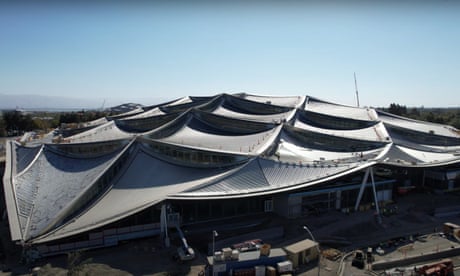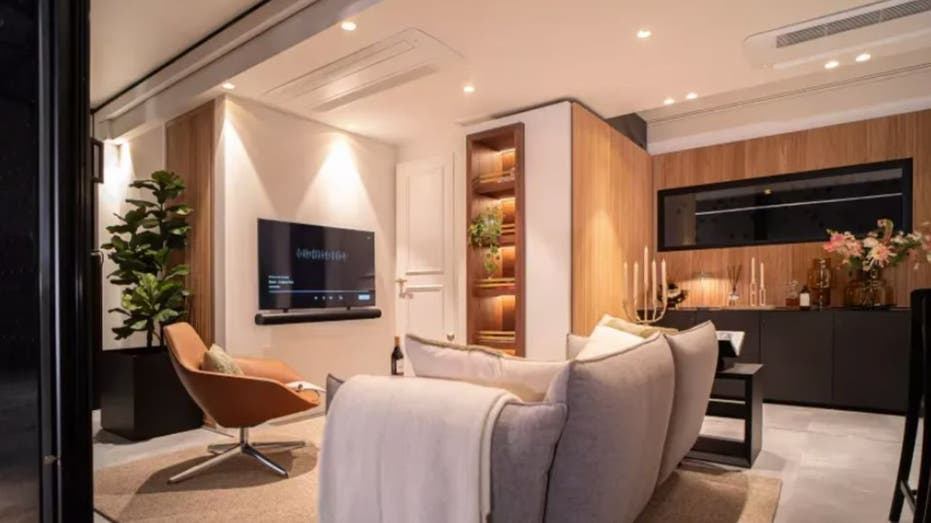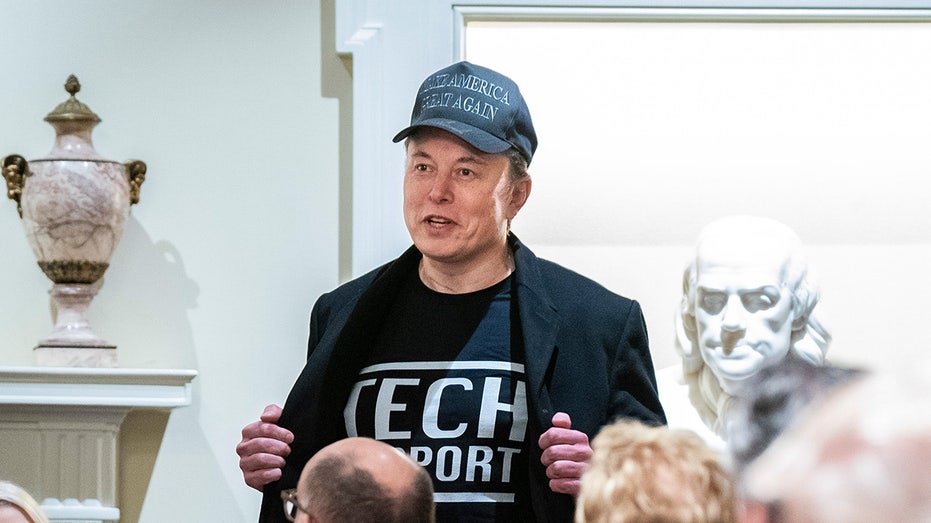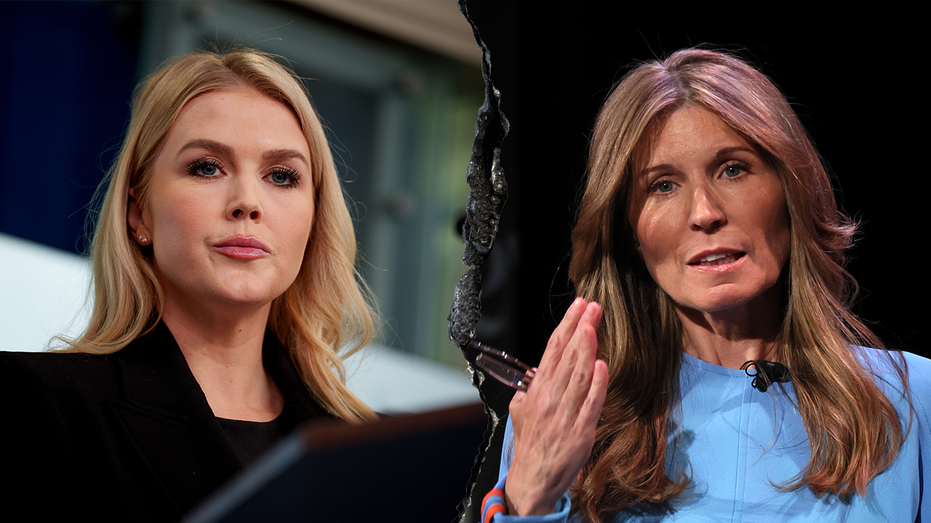- by foxnews
- 06 Mar 2025
Google’s ‘dragonscale’ solar-powered roof signals growing demand for sustainable workspaces
Google’s ‘dragonscale’ solar-powered roof signals growing demand for sustainable workspaces
- by theguardian
- 20 Jan 2022
- in technology

About 40 miles south of San Francisco, three futuristic structures rise from the earth. With sloping roofs clad in thousands of overlapping tiles, the buildings could be mistaken for the world's most architecturally advanced circus tent.
They are, in fact, part of Google's new Bay View campus, which is due to welcome employees this year - pandemic allowing - and is situated a few miles east of its existing HQ campus in Mountain View.
The firm says the finished buildings will have 90,000 tiles which form a "solar skin" roof, which its designers have named "dragonscale" and estimate will generate almost 7 megawatts of energy or 40% of the electricity needs of the campus. It sees this as part of its efforts to hit the pledge made by CEO Sundar Pichai that Google will run every data center and campus on carbon-free energy by 2030.
Corporations have never been under more pressure to follow through and make meaningful progress on carbon emissions from regulators and amid greater scrutiny around "greenwashing" from environmentalists - and their own employees.
Demand for low-emission offices is larger than it ever has been, according to several US architects the Guardian spoke to. That's especially true in California, where manifestations of the climate crisis are obvious: hotter summers, drought and an annual wildfire season.
"Buildings are awful for the environment," said Eric Corey Freed, the sustainability director at architecture firm CannonDesign. "If we're going to solve climate change, we have to fix our buildings."
In the US, buildings consumed around 40% of the country's electricity in 2020, according to data from the US Energy Information Administration, and are also one of the planet's biggest emitters of greenhouse gasses, accounting for 37% of the world's energy-related CO2 emissions. That's not including all the emissions from refrigerants - chemicals that maintain air conditioning systems and refrigerators - which have a global warming potential that's hundreds to thousands of times higher than carbon dioxide.
Designers must consider the "operational carbon" of running the building and the "embodied carbon" of creating it, such as the emissions from producing materials, constructing the project and transporting waste offsite.
Freed is optimistic, however, because the costs of being sustainable are coming down. "Considering solar [panels] for your campus or your building is so much less expensive than it used to be," added Maria Papiez, the director of sustainable design for EwingCole. "That really was only for the Googles in the past, who had the dollars to do that. And now, it's the least expensive form of electricity in some places."
As well as the "dragonscale" solar panels, Google's new campus also plans to have a geothermal battery underground where it will store heat to warm the building, Asim Tahir, the tech giant's lead on its sustainable energy strategy, told Grist. The idea behind all the Bay View innovations is "to kickstart this market in the US by showing it can be done", Tahir said. Google has been working on the project with architecture firms Heatherwick Studio and Bjarke Ingels Group (BIG) as well as Switzerland-based company SunStyle, which has created arrays of solar panels on multiple buildings in Europe and wants to expand in the US.
"I really do like the idea of a tipping point," said Papiez of EwingCole. "Once we get enough critical mass, there's this opportunity to really tip in the right direction."
Chris Chatto, a principal at architecture firm ZGF who has focused on sustainability for the past 15 years, says that he has seen a substantial uptick in clients requesting sustainable buildings. "Honestly, the amount of conversations I've had in the last three to six months is probably the same amount that I've had in the last few years," he said. ZGF is currently working with Microsoft, which has also made major goals to cut down carbon emissions. "I think in some ways", he added, "we've probably seen more consistent signals and interest from the tech industry on the west coast."
Architect Anthony Brower, a Leed fellow and director of sustainability at architecture firm Gensler has seen this too, beyond just the big tech giants. "Some clients have very general requests," he said, "They want to see sustainability integrated into their work. Other clients are getting very specific about exactly what they want in a very sophisticated manner."
Aside from contributing to global climate goals, sustainable architecture has increasingly become a recruitment strategy, specifically when competing for Gen-Z workers who deeply care about the climate and want to work for a company that embodies their values. Even Pichai, Google's CEO, said that shifting to renewables will help the company attract employees. "If you don't do this correctly, you won't be able to attract talent," Pichai told Bloomberg. "When I look at the younger generation, people who are teenagers now, I can't see them making the choice to work for a company which they feel is polluting."
Freed agrees, noting that employees often enjoy the experience of being in a sustainable building more than a traditional office, even if they don't know why, in part because sustainable spaces are often filled with light and natural materials. As Freed put it, "The spaces are just better to be in."
But this movement isn't just about recruiting or doing something ethical. As laws and building codes are updated, companies face mounting pressure to put resources behind sustainable projects. By 2030, California has a goal to bring its greenhouse gas emissions 40% below 1990 levels. Corporations also don't want to be penalized for refusing to comply with potentially more stringent laws down the line.
These signals are changing how investors think about their buildings. "At least some of our clients are recognizing they're going to hold on to the building for 10 years. Then when they want to sell and recoup and make a profit on their investment, it could be a very, very different world 10 years from now," he said.
One of California's recent building laws may incentivize companies to move away from some of the most polluting building materials. In July, the state gave the green light to mass timber buildings up to 18 stories high. Mass timber - smaller pieces of wood fused into strong slabs - is heralded as a more sustainable alternative to steel and concrete, and has been widely used in Europe for two decades already. Before the code update, California limited mass timber structures for commercial use to six stories, making it impossible for many projects to use.
Mass timber presents an exciting prospect in California. The material has a naturally lower carbon footprint than concrete and steel, and even sequesters carbon, pulling it out of the atmosphere, like trees, to turn a building into a carbon sink. California's first multi-story, fully mass timber building, 1 De Haro, developed by SKS Partners and designed by Perkins&Will, was recently completed in San Francisco. With floor-to-ceiling glass windows paired with raw wood beams and ceilings, the space looks warm yet pristine. The project is zoned to be part office, part space for light manufacturing.
With its pledge to become carbon free, Google is attempting a bold feat. The goal is a steep one, especially since it's not only responsible for the output of its campuses, but massive data centers housing its servers. It's worth noting that Google's plan does not account for the company's scope 3 emissions - emissions that tie back to the company, but that the company may not control. These include the manufacturing, production materials, and transport of Chromebooks and Pixel, according to Grist. Though this isn't foul play, it's a shortcoming of the net-zero metric and applies to companies across the board.
To move the needle, architects continue to push sustainable workplaces as tools for change. "It's been an exciting time to be in sustainability", Freed said, "to see these pressures mounting, and companies now not only have to take it seriously, they want to, because they're seeing these overarching trends."
- by foxnews
- descember 09, 2016
'Gate lice' run-ins have flyers demanding more airlines 'crack down' on pesky travel trend
Passengers are asking major airlines to do something about "gate lice" problem at airports. American Airlines currently has new tech to stop the line-cutters.
read more





